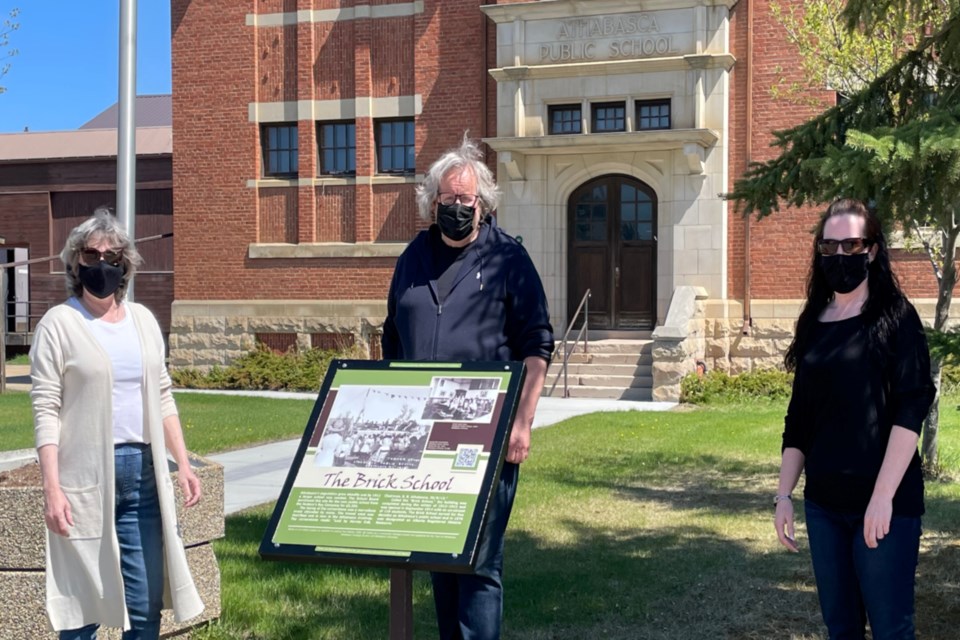ATHABASCA — Contrary to the old adage that 'The more things change, the more they stay the same,' some things do need to be replaced, which is exactly the case with Athabasca's historical signs, the first of which took place at the Brick School May 21.
Started in 1995 by students at Landing Trail Intermediate School (LTIS) the initial project was to create six heritage signs within the town with the students researching the history, writing the text and coordinating local suppliers for the materials and labour, explained Athabasca Heritage Society (AHS) member Mike Gismondi in an e-mail.
“The first six signs were: the Brick School, the United Church, Hudson’s Bay Company House, Falconer House, the First School, and Dent House (which is the site of the first RCMP Barracks),” he said.
Frank Falconer was the MLA for the Athabasca riding from 1930 to 1935, running as a Liberal and beating the incumbent then losing in 1935 to a Social Credit candidate. The one-room West Athabasca, or First School, was built in 1914 and was located at the corner of 47th Street and 47th Avenue.
“This initial success led the Athabasca Heritage Society to continue to develop additional heritage signs; starting with the Town Common boardwalk, the Gazebo and boat launch to interpret the heydays of shipbuilding and transport to the north,” said Gismondi.
In the first round of signs, Gismondi worked with local graphic designer Denis Jacobs, Athabasca University (AU) professionals and academics, and Town of Athabasca archivist Marilyn Mol to develop the story lines and the look and feel of the signs. Public works staff set the signs up along the riverfront and the bases were designed to fit the new Riverfront Design Plan and prevent vandalism.
“AHS next applied for more signage grants from the Alberta Historical Resources Foundation (AHRF) and members worked with private building owners downtown to add heritage signs depicting original storefronts or murals and stories of famous characters from the 1910s to their exterior walls,” he said. “They can be seen at the Athabasca Provincial Building, CIBC, Bank of Nova Scotia, Mike's Store and the old Macleod's store on the main street.”
There is also a large sign of a paddle-wheeler at the old water treatment plant, Captain Shot at the spray park, and murals on the washroom and lift station.
Louis Fosseneuve, a Métis river pilot, earned the nickname of Captain Shot after he successfully traversed the rapids along the Athabasca River, something many figured couldn’t be done.
“As interest grew, AHS adopted the current three-ring binder style signage along the Rotary Trail,” said Gismondi. “These displayed more images from the archives of the heydays at the riverfront and explain in more depth the role of Indigenous workers and settlers accessing northern transportation along the river.”
Throughout, many of Gismondi’s AU colleagues helped with research and design and town staff, like early heritage society president Rodney Winder, who brokered permissions and installation, he explained. Today, members continue this work with the Town of Athabasca and the province, who provide funds and grants, to maintain the 36 heritage signs on the riverfront and in downtown Athabasca.
AHS president Margaret Anderson, who took the signs holders apart and cleaned them, gave special thanks to many people who contributed to the current replacement of the signs.
"Thank you to Northwest Fabricators, the Town of Athabasca for their continued monetary support and specifically town staff Warren Zyla and Graeme Douglas for their assistance, AHRF and FastSigns,” she said.
More signs will be replaced over the summer.



